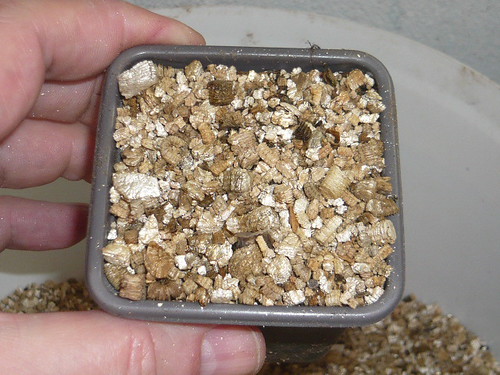Vermiculite for Seed Sowing
Posted: February 7th, 2011 | Author: hortoris | Filed under: Growing Aids | 1 Comment »Vermiculite is a natural mineral ore that has been heat treated to expand into a spongy worm like but inert substance.
Uses of Vermiculite
- Vermiculite greatly improves compost by promoting aeration and drainage, important for seeds and cuttings.
- Vermiculite improves germination and reduces the risk of damping off when applied as a thin layer on top of your sown seeds.
- A 50:50 mix of compost and vermiculite is ideal for the germination of seeds, because it’s aeration properties and water holding capacity make it a suitable medium for direct contact with the seeds.
- Vermiculite used alone without compost helps germination but seedlings should be fed with a week fertilizer solution when the first true seeds appear.
- Large seeds can be mixed with Vermiculite in a small polythene bag closed at the neck, and kept in a warm place until the seeds just start to germinate.
- Vermiculite can be mixed into compost for taking cuttings.
- Mixed with compost it can also store Dahlia and Begonia tubers through winter.
Available from good garden centres and Thompson & Morgan
Vermiculite for Cuttings
- Vermiculite 50% sphagnum moss peat 50% compost stimulates root growth, giving quicker anchorage of the plant and uptake of nutrients.
- Thoroughly water the vermiculite before inserting cuttings.
- Do not compress around the base of the cutting.
- Vermiculite gives a very light open compost, holding more water and facilitating re-wetting, thereby lengthening the time between watering.
- Vermiculite absorbs excess nutrients and releases them slowly to the plants via the finest root hairs.
- Use a lower proportion of vermiculite under mist irrigation in Summer say 25%.


[...] Slower germinating seeds should be covered with grit instead of vermiculite. [...]